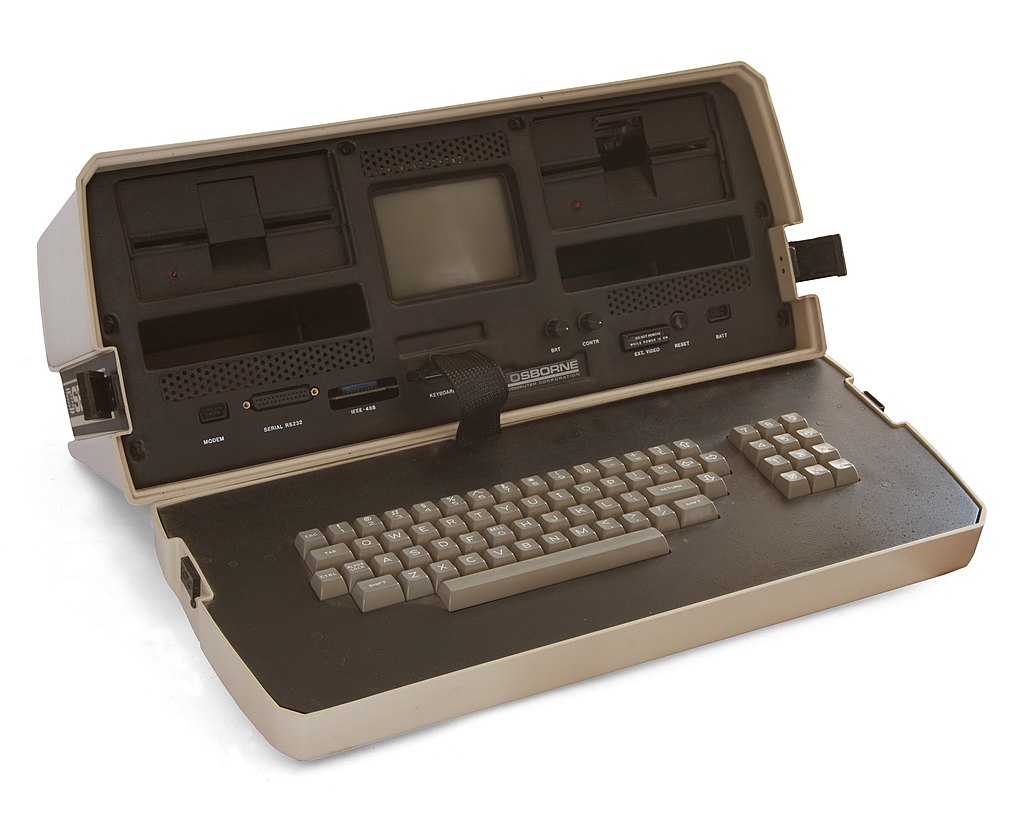Welcome to our seventh Pivotal Moments blog. If you follow us on social media, you’ll know what this is all about. To paraphrase Confucius, it’s only by knowing where we’ve been that we can know where we’re going.
“Study the past, if you would divine the future.”
Confucius
When you think of the history of computers, Adam Osborne isn’t likely the first name that comes to mind. Likewise, Osborne Computer Corporation might not ring any bells.
In truth, Adam Osborne wasn’t the first to come up with the idea of a portable computer. But he was the first person to create one that was practical and didn’t require Hulk-like capabilities to carry around. His laptop was the first of many that have set the standard for what we consider reasonable today.
Early Years
Born in Thailand to British parents in 1939, Adam Osborne spent most of his youth in India. Graduating from the University of Birmingham in 1961, he received a PhD from the University of Delaware.
In the mid-70s, Osborne got into computers as a hobbyist and began to self-publish manuals on computing – including one for Intel’s first microprocessor. In 1972, he founded Osborne and Associates, a company that was intended to create simple, easy-to-read computer manuals. By 1977, the company had published over 400 titles.
In 1979, Osborne sold the company and began writing articles for computer magazines. It was around this time that he became increasingly certain that computers could never truly be useful until they were more mobile.
He was convinced that computers needed to be small and light enough to move with their users, so they were available anywhere. But Osborne also didn’t believe than any existing computer company understood this need.
Or at least, that they weren’t interested in pursuing it.
It wasn’t until March 1980 that Osborne approached engineer Lee Felsenstein with his idea. Felsenstein had been a member of the HomeBrew Computer Club like Steve Jobs and was an ex-Intel engineer. Osborne proposed a company that could create affordable and portable computers, with software already installed. And he wanted Felsenstein to develop the hardware.
The Pivotal Moment

With the money Osborne had made from the sale of his publishing business, he founded Osborne Computer Corporation in 1981.
Felsenstein followed Osborne’s specifications and designed a computer in a portable case. It had a carrying handle, and was sturdy enough that it could survive minor accidents like being dropped. To top that off, it was small enough to fit under the seat of an aeroplane.
Weighing 24 pounds, with a five-inch screen and two floppy disk drives, the machine also contained a battery pack. Felsenstein installed a full screen’s worth of memory to meet the small screen requirements, and in April 1981 Osborne introduced the Osborne 1 Personal Business Computer. At only $1795 per unit, it cost a little over half the price of comparable computers.
The company was soon shipping out around 10,000 computers a month. By September 1981 Osborne Computer Company had its first $1 million sales month. That year the company made $6 million and went on to make $68 million the following year.
The Later Years
Though Osborne’s laptop was a fast success, there was heavy competition right from the start. Kaypro Computer was soon offering a portable computer with the same spec and software, but with a larger 9-inch screen. Apple’s offerings were also growing, as were IBM’s and Compaq’s – and with faster, more advanced software.
In addition to the heavy competition, Osborne made several business errors. The company struggled to meet demand, the production quality dropped, and the company was overstocked.
The killing blow landed in 1983 – just two years after the company’s initial boom. Osborne made the mistake of boasting about an upcoming product, months before it could be released. This almost entirely killed any demand there had been for the company’s currently available products, and many dealers began to cancel their orders.
As unsold inventory built up despite the company dramatically lowering the price of the Osborne 1, their sales never recovered. In September 1983, Osborne declared bankruptcy.
How Osborne’s Laptop is Still Relevant Today
Though Osborne recovered from bankruptcy and went on to write successful software, release books, and even work on AI, it’s not his career that still resonates. Osborne was far from the first person to come up with the idea of a portable computer, but it was his determination to follow through that makes him memorable.
In 1975, IBM released the first portable computer. But at 55 pounds, it was impractical and difficult to transport. A year later, Alan Kay came up with something similar, naming it the Dynabook. But again, it wasn’t practical. In 1979, Bill Moggridge designed the GRiD Compass, and though used by NASA for several years, it wasn’t useful to the everyday consumer.
Adam Osborne saw a gap in the market for a computer that was light enough to carry, small enough to store, with in-built software.
It wasn’t the idea that made Osborne the man who invented the laptop, it was the work he did to pursue it. By combining them, he proved that reading the market and providing something of value was the driving force behind moving computer technology forward.
I’m writing this piece on a laptop. I wouldn’t be doing that if Osborne hadn’t understood the need for hardware and software in a bundle that could be used by anyone. Without his push to satisfy a need, the world of computers – the age of technology and digital strategy itself – would be very different indeed.